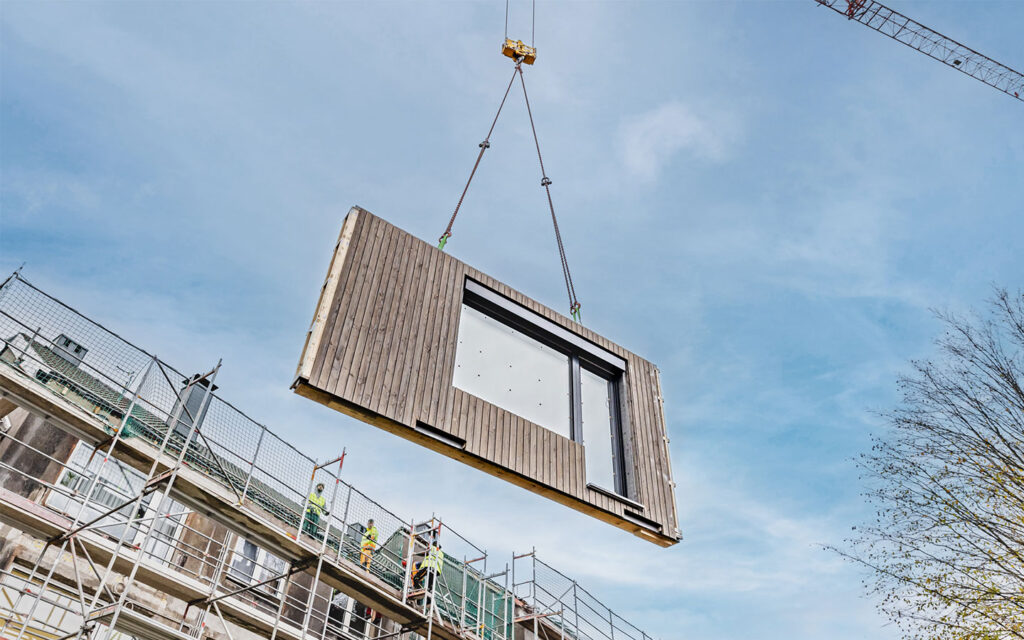Often the most obvious things are the hardest to see, and that could be said of the building envelope in our quest for climate-friendly real estate.
Architectural trends over the past few decades have favored glass, prioritizing the facade’s aesthetic appeal and leaving the envelope's functional aspects to take a backseat. Double or triple-pane glass does represent progress but many buildings, especially those constructed in the latter half of the 20th century, remain ill-equipped to handle the thermal demands placed on them.
As buildings’ energy performance has taken center stage in the last decade, numerous innovations have emerged for windows, shading, and roofs but the spotlight still generally falls on HVAC, lighting, and other major building systems to find energy savings.
In the same way we learned to view human skin as the body’s largest organ, it is about time we started to look at the building envelope holistically, as a system in its own right, with vast inefficiencies and potential for optimization to support overall building goals.
“A building envelope is a sub-system of the whole building. It is not just a wall, roof, floor, window, window, or door, but a sub-system of the building and, in turn, it is composed of various sub-systems,” says Diaa El Masry, co-founder and Director of Sustainability and Green Building at Qatar Green Leaders. “By applying a systems thinking approach, we find that building the envelope is not only providing a “shelter” to building occupants but also contributing to the overall building performance.”
The percentage of heating and cooling lost via the building envelope varies widely depending on factors such as building design, construction and insulation materials and processes, window type, and the external climate. However, recent business activity, however, suggests that the market is beginning to recognise the opportunities presented by building envelope improvement. In February 2022, for example, KPS Capital Partners announced it had acquired Oldcastle BuildingEnvelope Inc. in a $3.45 billion cash deal.
Headquartered in Dallas, Texas, Oldcastle BuildingEnvelope is a manufacturer, fabricator and distributor of architectural hardware, glass and glazing systems with a strong presence across North America. Following the acquisition, in June 2023, Oldcastle then announced the acquisition of Syracuse Glass Company, an independent fabricator and distributor of glass and aluminium products in the US northeast, filling out their US network and offering.

A month later, in July 2023, a strategic partnership was announced between facade retrofit firm INOVUES and energy audit firm QEA Tech. INOVUES promises non-invasive retrofits that can save building owners up to 40% in energy consumption and reduce greenhouse gas emissions by up to 30%. In combination with QEA Tech’s AI and infrared-enabled drone analysis system for the building envelope, the pair create a powerful force in an efficiency-driven buildings market.
“We are excited for this opportunity to help more building owners diagnose and minimize energy loss through the façade, which is responsible for a staggering amount of greenhouse gas (GHG) emissions,” said Anas Al Kassas, INOVUES Founder and CEO.
Building Envelope Funding
Prior to the partnership announcement, in April 2023, QEA Tech raised a seed funding round of $2.2 million, led by Clean Energy Venture Group (CEVG) and was supported by Avesta Fund, E8 Ventures, Upward Labs, and the Ontario Centre of Innovation (OCI).
Founded in 2019, in Canada, QEA Tech has already delivered over 500 projects in North America and the impressive funding round will aid their expansion into a market that is obviously hungry for a greater understanding of their building envelope energy losses.
On July 28th 2023, Berlin-based climate-neutral refurbishment company ecoworks successfully closed a financing round with 22 million euros. Investors included PropTech1 Ventures, Zacua Ventures and Blackhorn Ventures, in addition to Warema Group, ALP.X Group, Huf Group, and Sabancı Building Solutions.
The financing round will enable ecoworks to reach break-even and focus on delivery, product cost reduction and development of their software platform in preparation for the tightening of building EU regulation.
Be it for compliance, rental value, brand reputation, or supporting climate change mitigation, buildings must continue to become greener or risk becoming stranded assets in an increasingly conscious society.
The next decade will see a large generation of late 20th-century building stock face the environmental chopping block and they will need more than just LED lights and HVAC improvements to make the cut. The time is right for the building envelope to take its place as a major building system in need of an energy performance revolution.



